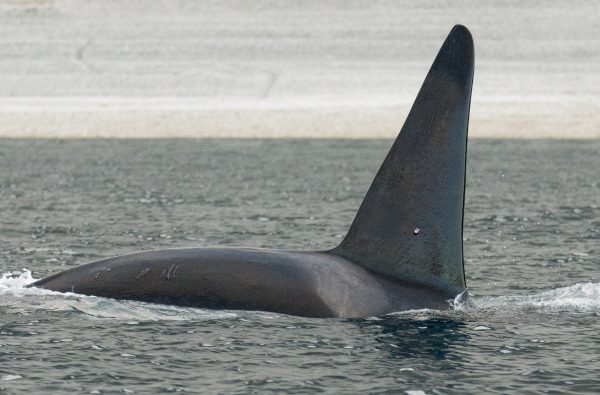Arctic killer whales alter narwhal distribution and activity
February 10, 2017
Sonnary Campbell
907-474-7811

Narwhals stay active and close to shore to avoid killer whales that have begun to enter areas with declining sea ice cover in Canada’s eastern Arctic, according to a study led by a University of Alaska Fairbanks scientist.
Assistant Professor Greg Breed of the UAF Institute of Arctic Biology, along with Cory Matthews of the University of Manitoba and Steven Ferguson of Fisheries and Oceans Canada, discovered the narwhal behavior. For several weeks in summer 2009, they tracked a family group of killer whales simultaneously with seven narwhals in Baffin Island's Admiralty Inlet.
When killer whales were anywhere within approximately 60 miles (100 kilometers), narwhals avoided them by staying close to shore in shallower water. The narwhals also tended to make longer, faster movements. As soon as killer whales left the area, the narwhals moved offshore to deeper water and decreased their movement.
“The mere presence of killer whales in a system can cause relatively large and persistent changes in behavior and space use in prey species,” Breed wrote. These changes persisted for the entire time killer whales were present in the inlet, not just when they were close to or attacking the narwhals.
Narwhals live deep in the Arctic pack ice. Until recently, this kept them safe from killer whales for most of the year. Killer whales prey on narwhals and many other marine mammals. They have become increasingly common in the Arctic where they were previously largely blocked by sea ice.
Degraded sea ice now allows killer whales earlier access to the Arctic in areas where they historically ranged and new access to many areas where they had never been present before, such as Canada’s Hudson Bay.
The study was the first time scientists had simultaneously tracked both predator and prey marine mammals to understand their interaction.
Most of the world’s narwhals live in northern Canada and western Greenland, so a negative impact from killer whales might have a significant impact on the total population.
If narwhals change their behavior in response to killer whales, they could feed less, experience more stress, expend more energy or raise fewer young. Other effects could cascade through Arctic ecosystems.
There are implications for wildlife management as well.
“Researchers and managers using tracking data to infer preferred habitat need to carefully consider how predators affect space use,” said Breed. “Preferred habitat might instead represent a refuge from predators” and not necessarily the best places for foraging, resting, or caring for young.
The results were published this week in the Proceedings of the National Academy of Sciences.
In addition to UAF, the authors were from Fisheries and Oceans Canada, the University of Manitoba in Winnipeg, the Assiniboine Park Zoo and Higdon Wildlife Consulting. Funding was provided by Fisheries and Oceans Canada, Ocean Tracking Network, International Governance Strategy, Oceans North, Nunavut Wildlife Management Board, WWF Canada, ArcticNet, the Carlsberg Foundation, the U.S. National Science Foundation’s Polar Continental Shelf Program and the University of Manitoba.
ADDITIONAL CONTACTS: Greg Breed, 907-474-1835, gabreed@alaska.edu, Cory Matthews, 431-999-2679, cory.matthews@dfo-mpo.gc.ca, or Steve Ferguson, 204-983-5057, steve.ferguson@dfo-mpo.gc.ca


